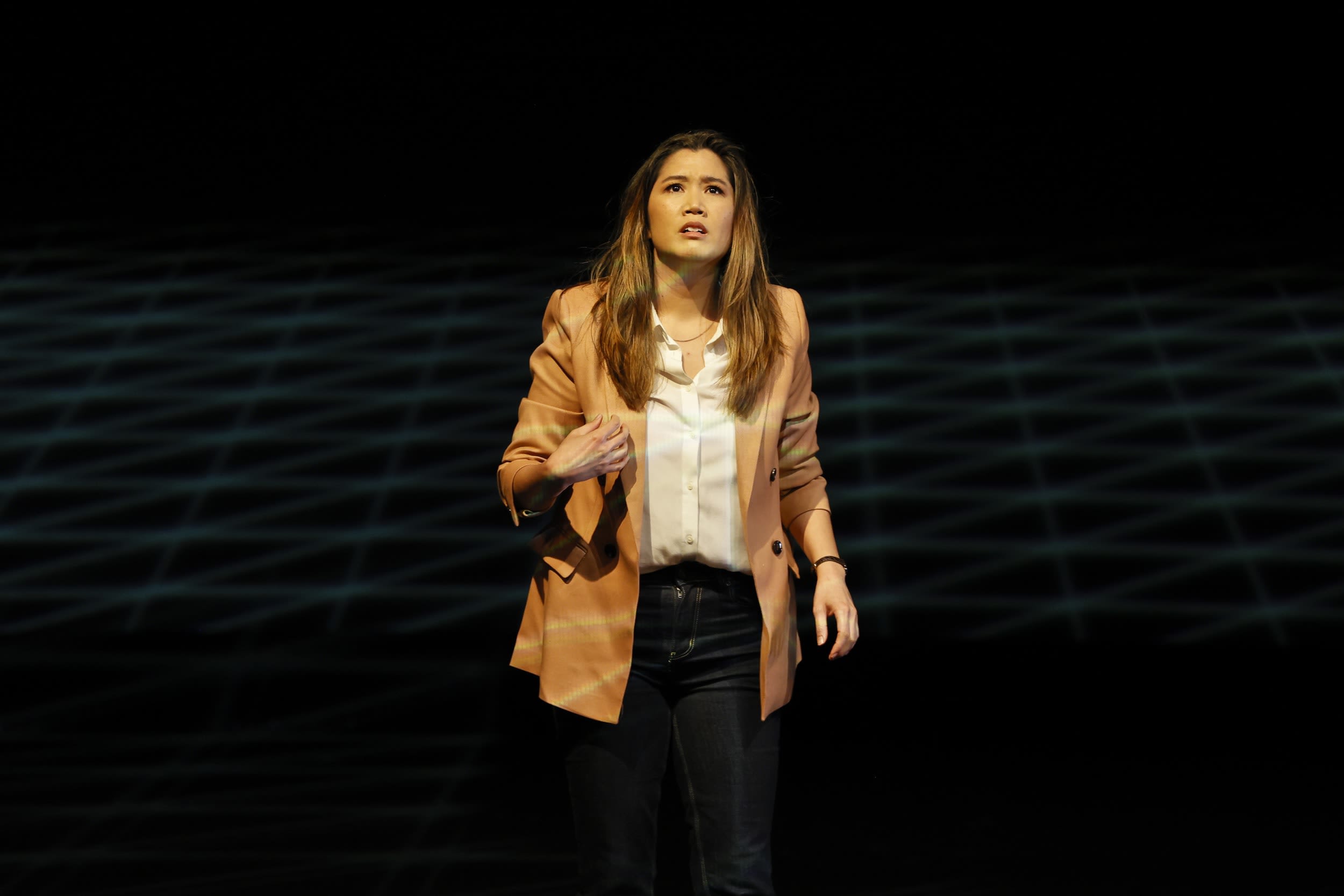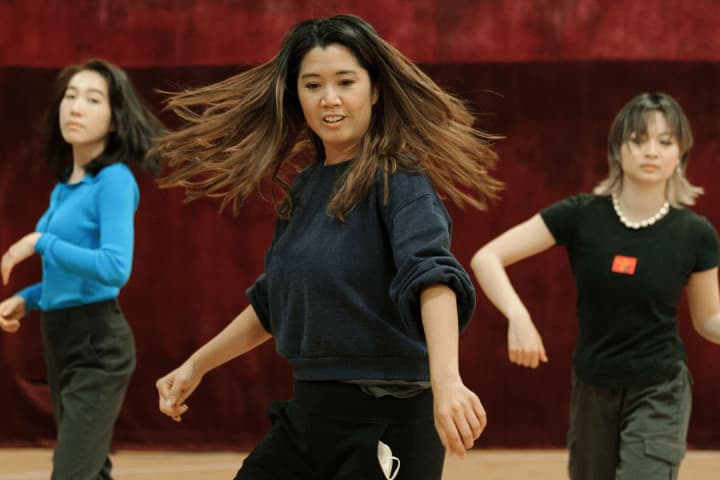Diana Nguyen has been in awe of Alice Pung since 2008. ‘I read Unpolished Gem and it’s based in Springvale where I grew up. Alice’s parents once worked at Retravision there and that was a landmark that we all knew.’ But it wasn’t just the familiarity and nostalgia of reading about the suburb she grew up in that resonated with Nguyen. It was reading a story about a fellow second-generation Australian, a child of refugees, that really hit home.
That feeling multiplied when Nguyen read Pung’s novel Laurinda. ‘Reading Laurinda the novel, I’ll be really honest, I found it very frustrating for the first three quarters because I felt like Alice had written my story of assimilating.’ For Nguyen, Pung perfectly encapsulated the experience of being othered, in subtle and overt ways, and how it layers upon you. Her frustration came from a desperation for Lucy Lam, Pung’s 15-year-old protagonist, to have a different experience than her. ‘I was like, oh God, please save her.’
But as she continued reading her wish was answered. In the last quarter of the book Lucy stands up and comes into her own. ‘In that epic speech at the end, Lucy tells everyone who she is and where she’s from.’ Nguyen wondered, ‘What if every person who is second-generation Australian, with either refugee or migrant parents, could have that affirmation that Lucy has of who she is at that age?’

Ngoc Phan as Lucy Lam in Laurinda. Photo: Jeff Busby
Though the novel ends when Lucy reaches that point of affirmation, for Nguyen the story also depicts the endurance and courage that Lucy will need for the rest of her life. ‘It’s not an endgame,’ she explains. ‘You don’t cross the hurdle and everything’s fine. So anyone who has been bullied or discriminated against because of their disability, gender, the way they look or where they’ve come from will get that endurance. It’s not just moments of your life, its day-by-day.’ Which is just one of the reasons why Nguyen leapt at the opportunity to adapt Laurinda for the stage when Petra Kalive approached her back in 2020.
Found in translation
Nguyen was also thrilled at the prospect of bringing a Vietnamese play to a mainstage. ‘For more than 17 years of my career, my aim has been to welcome my people to come and see theatre that looks and sounds like them. So I was very excited about the prospect of having Vietnamese language on stage.’
In Pung’s novel, however, Lucy Lam is from two cultural backgrounds. ‘She’s Teochew Vietnamese,’ Nguyen explains. And Lucy’s mum in the novel speaks Teochew, a Chinese dialect. The Teochew people, also known as the Chaozhou people, are native to the Chaoshan region, which is in Guangdong, a coastal province in southeast China. Today, however, vast contingencies of Teochew people live outside China throughout Southeast Asia, including Singapore, Malaysia, Thailand, Cambodia, Vietnam, the Philippines and Indonesia, and around the world, including Australia, New Zealand, Canada and the US.
‘Teochew is part of the Chinese language,’ Nguyen says. ‘But we received approval from Alice to make this more Vietnamese centric.’ So with Pung’s blessing, in this version of Laurinda Lucy and her family speak Vietnamese, the language Nguyen’s own mother speaks.

Ngoc Phan as Lucy Lam and Chi Nguyen as Mum in Laurinda. Photo: Jeff Busby
Nguyen admits her Vietnamese isn’t fantastic. ‘I’m second generation, so we thought Vietnamese wasn’t cool,’ she says. But with help from actor Chi Nguyen, who is performing in the play, they set about translating some of the dialogue spoken by Lucy’s family. ‘It’s been amazing to be part of this process, and to write the voice of the mother in this beautiful, fluent Vietnamese. We’re not even going to translate the Vietnamese to English. The audience will kind of sit with it. And I think that’s what’s so great about theatre – you don’t need to understand everything, but you can feel it.’
A team effort
The collaboration on this work goes beyond the Vietnamese translation. Nguyen and Kalive started adapting the novel in August 2020 in lockdown. ‘I know it’s crazy to write a play on Zoom and not have physical contact, but we did it. And we probably didn’t meet in person until four or five months later.’
Then came two developments at MTC in April and November last year. ‘What I really enjoyed about those developments was to hear the voices that also related to the story of Laurinda,’ Nguyen reflects. ‘It was a collective of artists also going “Oh God, I know how that feels. I resonate with that character travelling through this world.”’ That has been one of the most beautiful aspects of this whole experience for Nguyen. ‘We all shared stories about our experiences, and Petra and I are so grateful those artists gave us the gifts of their stories, because now they’re layered within Laurinda as well.’

Diana Nguyen during rehearsals for Laurinda. Photo: Sarah Walker
During the development stages it became clear to Nguyen and Kalive that they could not hire 17 actors to play each role in the story. ‘But this is the magic of theatre,’ Nguyen says. ‘What Petra and I talked about a lot was the empowerment of actors to play different roles that are not Asian. So we have Asian actors playing very complex white characters.’ And this decision influenced their writing. ‘It motivated our writing. We had very intentional thought processes around how these certain characters or certain actors will move into the space and be the conflict for Lucy.’
Throughout the whole process, Nguyen took stock to consider if the play was continuing to do the book justice. ‘Petra and I were always investigating whether Alice’s voice still floats through the play. It’s been really important for us to acknowledge that this world was created by Alice Pung and to make sure we’ve got Alice’s voice in it.’ But it is Nguyen, Kalive and the entire Laurinda team’s voices that bring this piece into the now. ‘I’m really glad that Alice is happy with what we’ve added to her story. And that now the next generation gets to fall in love with Laurinda as well.’
Published on 16 August 2022





